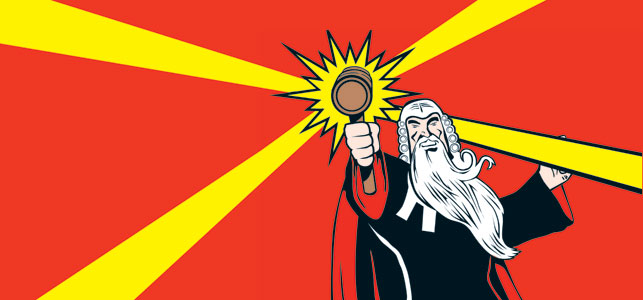With the ability to “print” all kinds of functioning 3D objects also comes some important legal consequences.

Simply put, printing products can be illegal if the products infringe someone else’s registered designs or other intellectual property rights (IPR).
Owners of valuable characteristic designs may act in different ways as 3D printing starts to impact on their commercial returns.
Some may take an open source approach and others may tread a stringent legal path. Nokia, for instance, provides access to a 3D printing template for personal customisation of the back cover of its smartphone.
However, it has also been quick to put in legal controls to stop others from exploiting its designs by limiting the production of its phone cover for personal use. More binding approaches may be adopted by others depending on their marketing and IPR strategy.
Defending your rights
Different types of IPR relate to different aspects of the printing process: from copyright in artistic works and the software used to control the printer, to design rights in the components and products produced, patents covering the specialised resins and polymers used in printing, the design, construction and mode of operation of the printer as well as trade marks for printer branding and those protecting the 3D features of the products produced.
So, for anyone developing a business built around 3D printing, there are specific IP issues that can affect the success of the operation. Liabilities don’t stop there; the onus is on those supplying and using 3D design templates to investigate who is the true owner of the original designs, products or creations.
Regular defence of IPRs is a current reality. Last year, Yantai Aowei Winery Co., Ltd and Yantai Chivas Winery Co. Ltd were found to be selling products in the shape of the Chivas bottle.
In so doing, it infringed Chivas’ 3D trademark regarding reproducing the shape of the bottle. In accordance with the Trademark Law of China, the court ordered the defendants to immediately cease using the bottle, as well as make a public apology in the newspapers, and pay an amount of RMB 500,000 in damages.
So, reproducing and selling under someone’s 3D trademark can have some serious consequences.
The Search is on
Alongside this legal backdrop, the controversial not-for-profit Defcad site is using crowd funding methods to create the world’s first so-called unblockable, open-source search engine for 3D printable models. Its founder, Cody Wilson says:
“The revolution which many predict 3D printing will bring about will only happen if it can be freed from corporate ties.”
The blueprints available on the site will be for “important stuff”, he claims. “Not trinkets, not lawn gnomes but the things institutions and industries have an interest in keeping from us; access, medical devices, drugs, goods and guns. There will be no take downs.”
Many of those products covered by the blueprints will be protected by IPR and their use governed by other laws and regulations. But Mr Wilson appears controversially to be raising a point perhaps better expressed by Einstein ““We can’t solve problems by using the same kind of thinking we used when we created them.”
If 3D printing gains widespread traction, then the world will behave differently.
The implications for everyday life have spurred something of a craze and hype as well as reviews calling for the alignment of IP laws and policy changes at Government level.
But then, so did the “Information Superhighway” – now the essentially accepted internet. Society has found a way of assimilating this paradigm shift within the intellectual property legal framework. There is no reason to suggest why this should not happen with the emergence of 3D printing.
In the meantime, as controversies such as what is permissible with file-sharing services such as Napster, plagiarism from the web and even the extent to which documents can be reproduced by the humble photocopier have shown, disputes are likely to continue.
It is perhaps unwise to ignore IPRs and to assume that the legal intellectual property framework will be abandoned as this technology becomes more widespread.
What you can do
Before contacting an intellectual property advisor, there are some easy checks around the products that you wish to produce that can be made first.
For instance, you can search for 3D Trade Marks and designs that others may have registered that prevent you from legally using or producing certain product shapes.
National websites are available to carry out such searches: e.g. ipo.gov.uk for UK marks; or oami.europa.eu for European Community Trade Marks; or tess2.uspto.gov for Marks that are registered in the USA. Have a look at what is already out there.
Doing your own research and perhaps, where necessary, taking advice at an early stage is the best way, for all involved in this fascinating technology, to avoid problems later on.
collerip.com
The legal implications of 3D printing
Default







